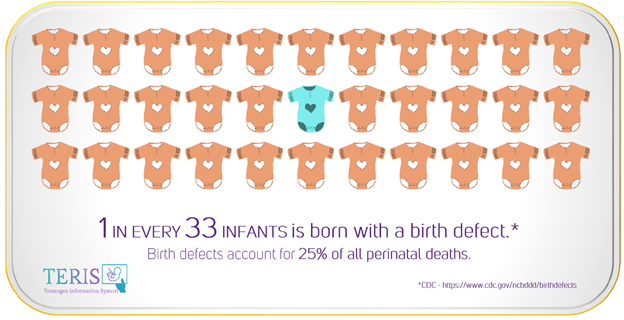Congenital anomalies or birth defects are structural or functional abnormalities that occur during intrauterine life. Congenital anomalies can be diagnosed prenatally, at birth or any time after birth.
Structural birth defects are seen in about 2-5% of infants within the first year of life and are the second most common cause of infant mortality, accounting for up to 25% of all perinatal deaths (premature birth is the most common cause).

The frequency of structural birth defects is higher in spontaneous abortions than in live-born infants, reflecting that many of the most severe conditions are incompatible with survival. Functional congenital anomalies like intellectual disability are infrequently recognized in infancy but are at least as common as malformations among older children and adults.
The cause of most birth defects remains unknown. However, some congenital anomalies are due to purely genetic factors such as chromosomal aberrations and abnormalities of a single gene or gene pair. Others are the result of maternal exposure to drugs (including medications), viruses and environmental chemicals. It is thought that the basis for many birth defects is a complex interaction between genetic and environmental factors that influence the risk of fetal injury.
Although most congenital defects cannot be prevented, improved clinical decision-making and patient education can reduce their frequency and severity.
For more information on birth defects, see the CDC website: https://www.cdc.gov/ncbddd/birthdefects/index.html
And the Teratology Primer 3rd Edition: https://birthdefectsresearch.org/primer/index.asp

